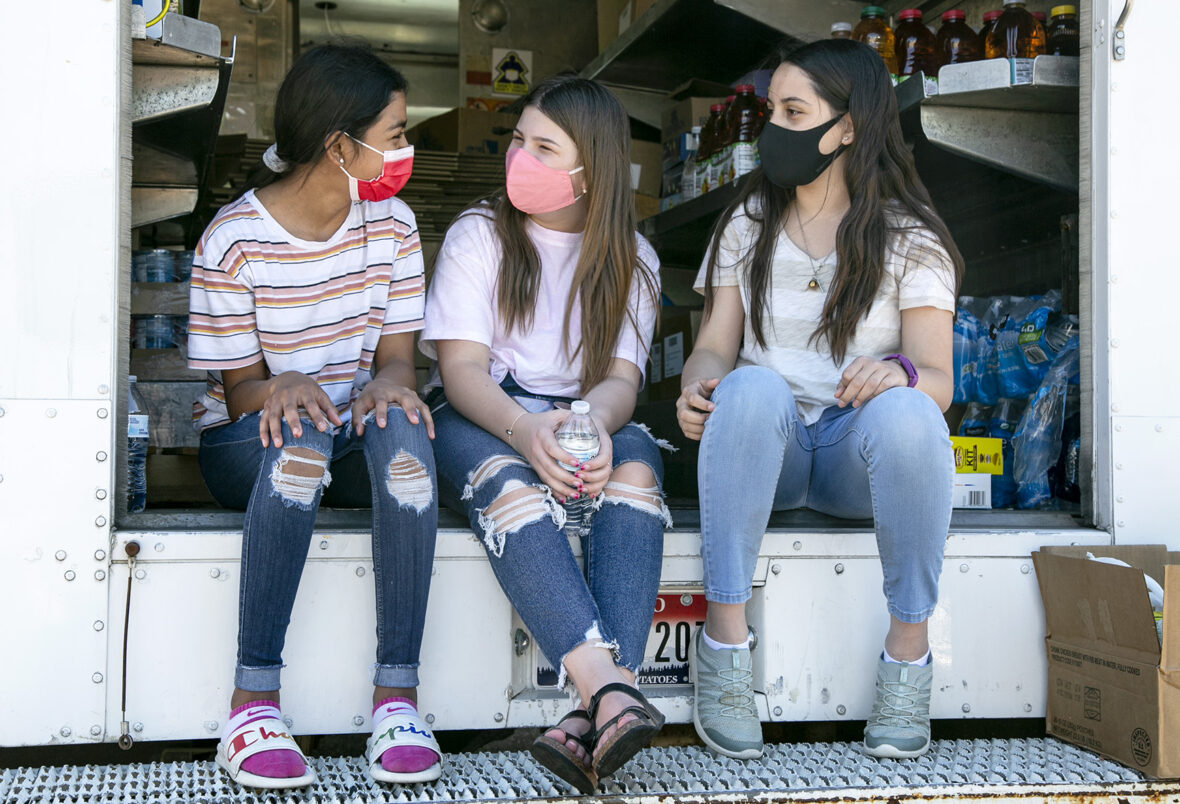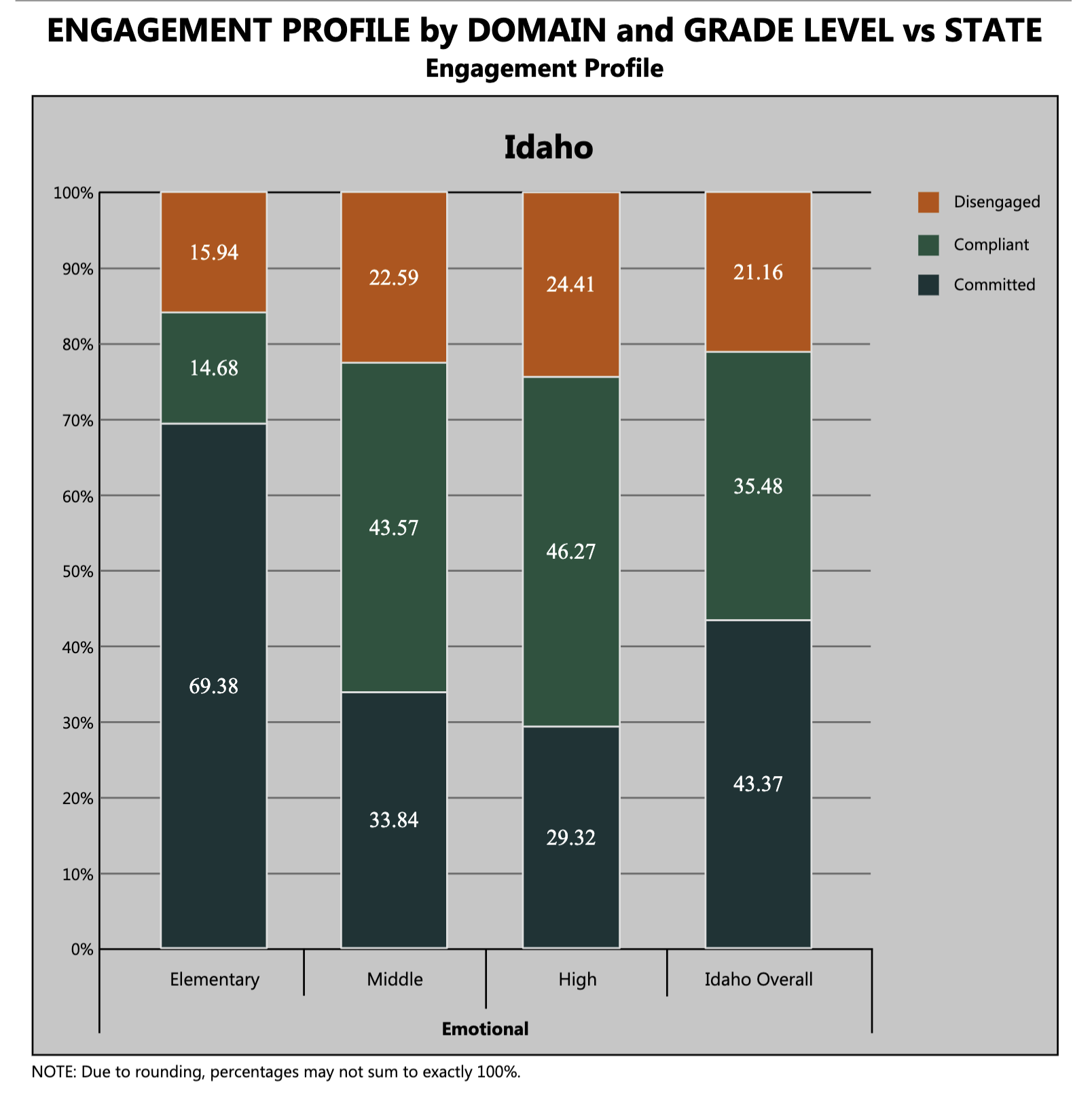
Idaho students struggled to engage more emotionally during the pandemic year than they did academically, according to the 2020-21 student engagement survey by the State Department of Education.
Just over 20 percent of the 185,000 students who responded to the survey were emotionally “disengaged” from school. Emotional engagement measures a student’s feelings about their classroom and school, their sense of belonging and feelings of connectedness.
Comparatively, about 9 percent of students were disengaged either “behaviorally” or “cognitively.” Behavioral engagement measures student’s positive conduct, effort or participation. Cognitive engagement measures a student’s investment in school and learning.
Emotional engagement is an important component of student’s learning outcomes, said Molly Strauss, president of the Idaho School Psychologist Association.
“When students’ feel safe, supported and valued, then they are more likely to interact with their peers and teachers, become engaged participants in their lessons, and demonstrate other prosocial behaviors that support interactive teamwork and learning,” Strauss said.
While 20 percent of students were considered emotionally “disengaged,” the majority of students reported more positive emotional engagement. Some 40 percent were considered emotionally “committed” to school.
The SDE measures student engagement annually as part of its compliance with the Every Student Succeeds Act, a federal education law. Results are not available for the 2019-20 school year, when the pandemic hampered normal spring surveying.
The SDE released preliminary student engagement survey results to Idaho Education News, but has not yet published a comprehensive engagement score. In years past, the state has released that engagement data late in the summer.
It’s not unusual that students score lower on emotional engagement than they do in other categories, said Kris Rodine, spokeswoman at the state department of education. The trend was the same in 2018-19.
“Nonetheless, as we begin to review this year’s data, it is important to emphasize that this school year was unprecedented,” Rodine wrote in an email. “Survey results…do not necessarily represent the levels of engagement we would normally see.”
Strauss, who worked in the Vallivue School District last year, said the pandemic certainly played into students’ feelings of emotional security. When students returned to school in 2020 it seemed to take them longer than usual to form connections with their mask-wearing peers, Strauss said. Then, when mask mandates loosened, some students were “paralyzed with fear,” and would alienate themselves from peers and teachers.
“Plainly put, some students did not feel safe or struggled to find meaningful connections with peers, which thwarts their emotional well being and engagement with school,” Strauss said.

As in past years, the student engagement levels generally declined as students got older. One in four high school students reported being emotionally disengaged.
“The students, especially those in Idaho’s middle and high schools, are telling us that their emotional wellbeing and mental health needs…are not being met when they move to middle school,” Strauss said. “Idaho can do better to support our students, our future, during the tumultuous years of middle and high school.”
Emotional engagement was also lower among boys than girls, and some student subgroups reported far less emotional engagement than their peers. Students experiencing homelessness and poverty reported lower emotional engagement. Almost 40 percent of high school students with a disability reported being emotionally disengaged, and emotional engagement was lower among Native American, Hispanic and multi-racial students than among students of other races or ethnicities.
“The good news is that kids are resilient and if we take a proactive approach… I believe emotional engagement will increase,” Strauss said.
She recommends that schools make an effort to initiate meaningful relationships with parents and families, even if that takes visiting a student’s home. She also suggested forming a strong mental health team to support student’s emotional wellbeing, and also taking care of school staff, “so they have energy to take care of their students.”
The student survey was one of three that the SDE conducts each year. A 2021 staff engagement survey netted only 20,000 responses (about 52 percent of certified and classified staff) and 50,000 parents responded to a 2021 parent engagement survey.
